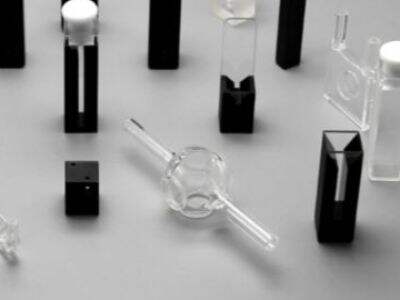Optical cuvette is very good tool & scientist use it for their experiments especially in the spectrophotometry process. One such method is spectrophotometry, which measures the amount of light absorbed by a sample. Using and caring for optical cuvettes properly is critically important to ensure optimal optical cuvette performance. In this blogpost, we will summarize several best practices that will help you employ your cuvettes in your experiments with high efficiency. So using these tips, you can get good results every time you use them in lab.
Optical Cuvettes: Tips for Cleaning and Handling
Note: One of the most crucial points to be kept in mind while utilizing optical cuvettes is the cleaning procedure. There can have dust or remaining liquid on the cuvette, which really does change your experiment. The first step should be to rinse your cuvettes for major dust with just water. Then you rinse it again with the solution you will use in the experiment. This is significant because it also effectively removes remaining substances that could potentially alter your results.
Light abrasions or scratches will prevent light from transmitting through, so never wipe clear portions of cuvettes with anything other than a soft cloth or tissue. Be mindful of scratching or damaging these clear parts when doing so, as scratches also can affect your results. This means they need to be as clean as possible in order for the light to pass through them easily.
In addition, the clean parts are also transparent, you should not touch them with your fingers or any other thing while operating your optical cuvettes. That’s because fingerprints, oils and dirt can interfere with your results. So take care of your cuvettes and always wash your hands before using them. Just by keeping your hands clean and meticulous, you almost guarantee that your results will be accurate in all instances.
Optical Cuvette–Checks and Calibration
You need to calibrate your cuvettes consistently to ensure they yield accurate outcomes. This is known as calibration. Calibration helps you quantitatively interpret the amount of light absorbed by your solution, or how concentrated your sample is. By understanding this, you can validate your experiments providing the right insight for you.
Another very important element in optical cuvettes usage is quality control check. You can do this by measuring a solution that you know about with your cuvette and doing a quality control check on it. Then you compare what you got to what you expect. If the results are the same, well and good! If they do not match, then your cUVette may be an issue. So this process allows you to identify if you have any issues and to resolve them before you do your actual experiment.
Minimizing Errors in Spectrophotometry
In spectrophotometry, a specific method where the absorbance of a sample to light is measured, optical cuvettes are used. When trying to avoid errors and ensure that your results are correct, remember these key points:
Make sure your cuvette is aligned with the beam of light first. This alignment is very important, as it allows the light to make it smoothly through your sample. And when the light goes through evenly, it's a more accurate result. Additionally, always make sure you measure your sample at the same temperature. The temperature of your sample may change how much light it absorbs, which can yield different results.
Optical Cuvettes: A Guide to Getting Optimal Performance
Learn how to use them properly and take care of them so that you can derive the best results from your optical cuvettes. Just remember to wash them before use and handle them carefully, using clean hands. But before you use any device in a session, it is vital to validate device functionality. You can also use performing quality control checks to ensure your results are accurate.
These steps can help you avoid mistakes in spectrophotometry. Keep in mind where your cuvette is in relation to the light source, and use the same temperature for your sample every time. Doing so will help you achieve the best results.
Increase the Results of Your Experiment
With these simple tips you will ensure the good operation of your optical cuvettes during your experiments. This shows you a way to get good and reproducible results every time you use them in the lab. Irene: One of the brands that came to mind is Jinke Optical, which produces very popular and high-quality optical cuvettes, and we will try our best to serve our customers with the best products. For accurate and reliable results in all of your experiments, always use and maintain your Jinke Optical cuvettes carefully. Keep in mind that caring for your equipment is almost as important as the experiment itself!
 EN
EN
 AR
AR
 BG
BG
 HR
HR
 CS
CS
 DA
DA
 NL
NL
 FI
FI
 FR
FR
 DE
DE
 EL
EL
 HI
HI
 IT
IT
 JA
JA
 KO
KO
 NO
NO
 PL
PL
 PT
PT
 RO
RO
 RU
RU
 ES
ES
 SV
SV
 TL
TL
 ID
ID
 LV
LV
 SR
SR
 SK
SK
 UK
UK
 VI
VI
 HU
HU
 MT
MT
 TH
TH
 TR
TR
 FA
FA
 AF
AF
 MS
MS
 GA
GA
 IS
IS
 LA
LA
 KK
KK







